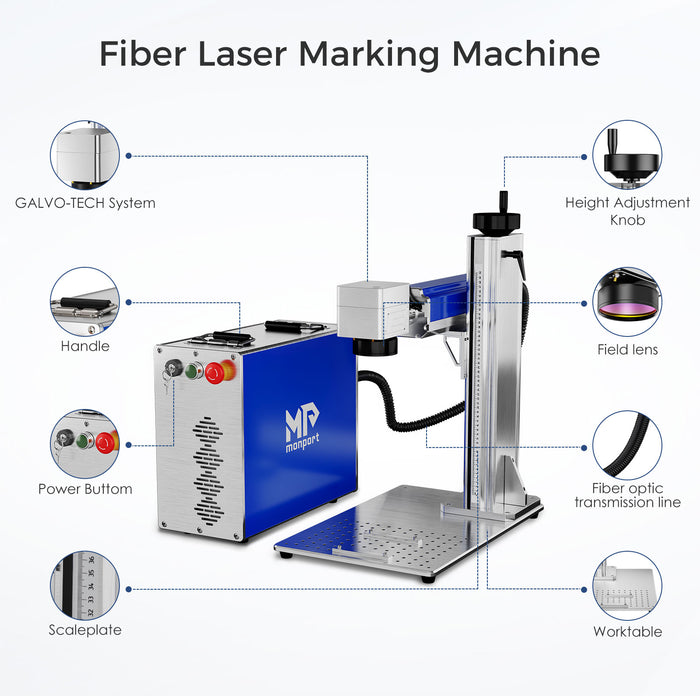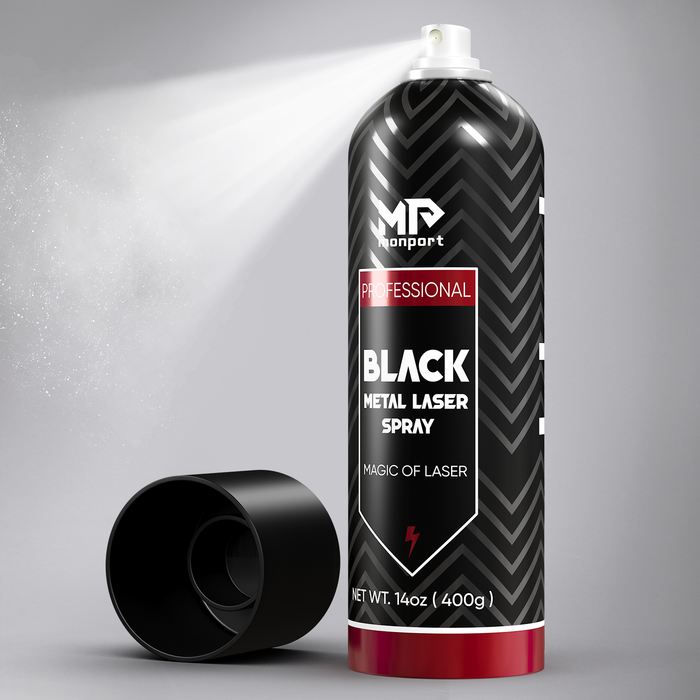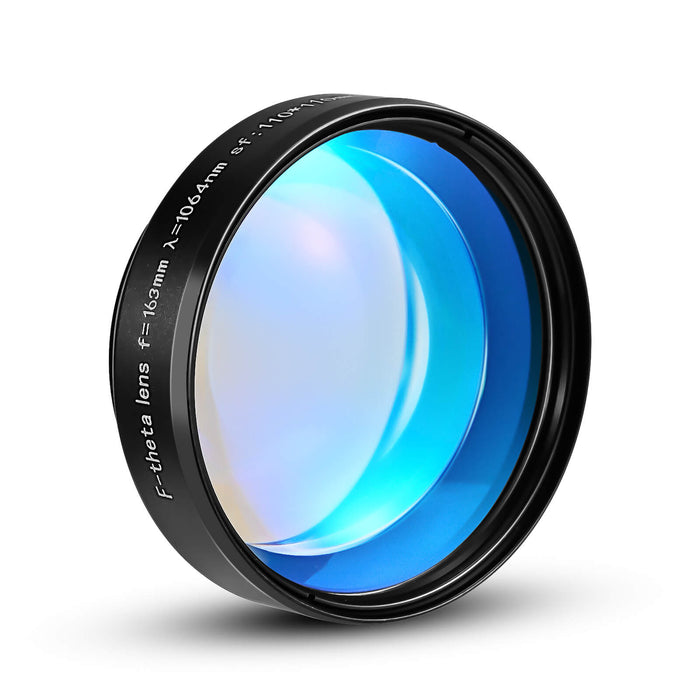Along with the laser machine's quality, perfect marking results are closely related to proper maintenance on the Raycus fiber laser. When working with sheet metal, metal residues can smear the laser focus lens, which negatively impacts the marking precision. To ensure optimal performance, it’s essential to regularly clean the fiber laser cutter lenses.

What is the fiber laser lens?

The fiber laser lens lens is a critical component of a fiber laser cutter marking machine. It is a type of lens that is used to focus the laser beam as it travels through the fiber optic cable to the marking head. The lens is typically made of high-quality optical glass or other materials with good transmission properties and is designed to withstand the high power density and heat of the laser beam.
The fiber laser cutter lens is responsible for shaping and focusing the laser beam to create the desired pattern or mark on the workpiece. It is typically mounted in the laser head and is adjustable to allow for precise control of the beam shape and focus.
The quality and performance of the fiber laser cutter lens can have a significant impact on the overall performance of the fiber laser cutter marking machine. A high-quality lens can help ensure good beam quality, accuracy, and marking speed, while a poor-quality lens can result in poor performance and reduced machine efficiency.
F-theta lens for fiber laser engraver
A F-theta lens is a specialized lens used in fiber laser marking machines to focus the laser beam onto the workpiece. It is designed to produce a flat or "theta" shaped focus spot, which allows for precise and accurate marking on flat or curved surfaces.
F-theta lenses are typically made of high-quality optical glass or other materials with good transmission properties, and are designed to withstand the high power density and heat of the laser beam. They are commonly used in applications such as laser marking, engraving, and cutting, where precise control of the focus spot is required.
There are several factors to consider when selecting a F-theta lens for a fiber laser marking machine, including:
Focal length: The focal length of the lens determines the size of the focus spot and the depth of field. Shorter focal length lenses produce smaller focus spots and shorter depth of field, while longer focal length lenses produce larger focus spots and longer depth of field.
Wavelength: The wavelength of the laser beam should match the wavelength range of the lens to ensure optimal performance.
Numerical aperture (NA): The numerical aperture of the lens determines the amount of light that can be transmitted and the maximum focus spot size. Lenses with higher NA values can transmit more light and produce larger focus spots, but may also have shorter depth of field.
Coating: The coating of the lens can affect its transmission, durability, and resistance to damage. Lenses with special coatings such as anti-reflective (AR) coatings may be more suitable for certain applications.

How to replace the F- theta Lens and what settings to do after replacement?
To replace the F-theta lens on a fiber laser marking machine, you will need to follow these steps:
Turn off the laser and unplug it from the power source. This is an important safety precaution to avoid the risk of electric shock.
Remove the old lens from the laser head. This may require the use of special tools or equipment, depending on the specific model of your laser. Consult the manufacturer's instructions or a qualified technician for assistance if you are not familiar with the process.
Install the new lens in the laser head, making sure it is securely seated and aligned correctly.
Turn on the laser and check the focus. Adjust the focus as needed to ensure that the laser beam is properly focused and producing the desired mark quality.
After replacing the F-theta lens, you may also need to adjust other settings on the laser to ensure optimal performance. These may include:
Laser power: The laser power may need to be adjusted to compensate for any differences in the transmission or focus characteristics of the new lens.
Wavelength: If the new lens is designed for a different wavelength range, you may need to adjust the wavelength setting on the laser to match.
Numerical aperture (NA): The NA value of the new lens may be different from the old lens, which can affect the focus spot size and depth of field. You may need to adjust the focus and other settings to compensate for these differences.
Coating: The coating of the new lens may have different transmission or reflection characteristics, which can affect the performance of the laser. You may need to adjust the settings to ensure optimal performance.
It is important to follow the manufacturer's instructions and use caution when replacing the F-theta lens to avoid damaging the lens or the laser. If you are not familiar with the process, it is recommended to seek the assistance of a qualified technician. I hope this information is helpful! Let me know if you have any other questions.

Why it is necessary to clean fiber focusing lenses?
- It is important to clean the fiber laser marking machine lens regularly to maintain optimal performance and prevent damage. A dirty or contaminated lens can cause a variety of issues, including:
Reduced beam quality: Dust, dirt, and other contaminants on the lens surface can scatter or absorb the laser beam, causing a loss of focus or reduced beam quality. This can result in poor marking quality or reduced marking speed.
Damage to the lens: Contaminants on the lens surface can scratch the lens or cause other damage, which can lead to costly repairs or replacement.
Reduced lifespan of the lens: A dirty or damaged lens is more prone to wear and tear, which can shorten its lifespan.
Cleaning the fiber focus lens on a regular basis can help prevent these issues and ensure that your fiber laser marking machine is operating at its best. It is generally recommended to clean the lens every few months, or more frequently if the lens is subjected to harsh or dirty environments.
- Cleaning the fiber laser marking machine lens has several benefits, including:
Improved beam quality: A clean lens allows the laser beam to focus and transmit more efficiently, resulting in better marking quality and accuracy.
Increased marking speed: A clean lens can improve the transmission of the laser beam, allowing the machine to operate at higher speeds without sacrificing quality.
Extended lifespan of the lens: A clean lens is less prone to wear and tear, and is therefore more likely to last longer.
Reduced maintenance costs: Regular cleaning can help prevent damage to the lens, which can save money on repairs or replacement.
Improved machine performance: Overall, a clean lens is essential for maintaining the best possible performance of your fiber laser marking machine.
By cleaning the lens regularly, you can help ensure that your machine is operating at its best and maximizing its lifespan. I hope this information is helpful! Let me know if you have any other questions.

Raycus Fiber Laser - daily maintenance
Check the laser head: Make sure that the laser head is securely mounted and that all components are in good condition. Look for any signs of damage or wear and tear, and address any issues as needed.
Clean the work area: Keep the work area clean and free of debris to prevent contamination of the lens or other components.
Check the focus: Make sure that the lens is properly focused and adjust as needed. A properly focused lens is essential for good marking quality and accuracy.
Check the cooling system: Ensure that the cooling system is functioning properly and that the laser head is not overheating. If the laser head becomes too hot, it can cause damage to the fiber or other components.
Check the gas supply: If your fiber laser marking machine uses a gas supply (such as nitrogen or air), make sure that the gas levels are sufficient and that the gas lines are not blocked.
Check the power supply: Make sure that the power supply is functioning properly and that the laser is receiving a stable power source.
Check the laser beam: Inspect the laser beam for any abnormalities or issues, such as poor focus or reduced beam intensity. If you notice any problems, try adjusting the focus or check for any damage or issues with the fiber or other components.
By following these daily maintenance steps, you can help ensure that your fiber laser marking machine is operating at its best and minimize the risk of unexpected downtime or damage.
How to Clean Fiber laser Lens?
Here are more specific steps for cleaning the fiber laser marking machine lens:
Turn off the laser and unplug it from the power source. This is an important safety precaution to avoid the risk of electric shock.
Remove the lens from the laser head. This may require the use of special tools or equipment, depending on the specific model of your laser. Consult the manufacturer's instructions or a qualified technician for assistance if you are not familiar with the process.
Use a lens cleaning solution specifically designed for use with optical instruments. These solutions are typically formulated to remove dirt, dust, and other contaminants without damaging the lens. Apply a small amount of cleaning solution to a soft, lint-free cloth and gently wipe the lens in a circular motion.
Rinse the lens with distilled water to remove any remaining cleaning solution. Distilled water is preferred because it is free of impurities that could potentially leave streaks or residue on the lens.
Dry the lens with a clean, lint-free cloth. Be sure to remove all water droplets from the surface of the lens to prevent the formation of water spots.
It is important to handle the lens carefully to avoid scratching or damaging it. Do not use harsh cleaning agents or abrasive materials, as these can cause permanent damage to the lens. If the lens is particularly dirty or has been damaged, it may need to be replaced.
Characteristics of Monport fiber lenses
There are a few key characteristics that are common to Monport fiber lenses:
High transmission: Monport fiber lenses are designed to have high transmission rates, which means that they are able to transmit a large amount of light without significant loss. This makes them ideal for use in fiber laser marking systems and other applications where high-quality, high-intensity light is required.
Low dispersion: Monport fiber lenses have low dispersion, which means that they are able to focus light into a small, concentrated beam without significant chromatic aberration. This allows for precise and accurate laser marking and other applications.
High damage threshold: Monport fiber lenses are designed to have a high damage threshold, meaning they are able to withstand high levels of laser power without suffering damage. This makes them ideal for use in high-power laser systems.
High-quality coatings: Monport fiber lenses are typically coated with high-quality, durable coatings that help to protect the lens from damage and reduce reflections and other unwanted light scattering.
Customizable: Monport fiber lenses are available in a range of sizes and focal lengths to meet the specific needs of different applications. They can also be customized to meet specific requirements such as increased transmission or reduced dispersion.
Elevate Your Engraving with Monport Black Laser Marking Spray

Monport black laser marking spray is an essential tool for those looking to create permanent, high-contrast markings on a variety of metals, including aluminum, stainless steel, and brass. Ideal for use with CO2 laser engraving machines of 25 watts and above, this black laser marking spray ensures deep, durable marks that withstand the test of time. With its advanced nozzle technology, the spray is applied evenly, allowing for a smooth, professional finish every time. The quick-dry formula of this black laser marking spray helps streamline your workflow by drying in just five minutes, enabling faster production. After engraving, simply rinse the surface to reveal the sharp, dark markings created by the black laser marking spray, making it perfect for a wide range of applications from custom jewelry to industrial tool marking.
Conclusion
With proper planning, the proper equipment, and a simple but well-thought-out procedure, you should be able to clean your fiber laser cutter lenses and get the most out of your laser machine for a long time!











